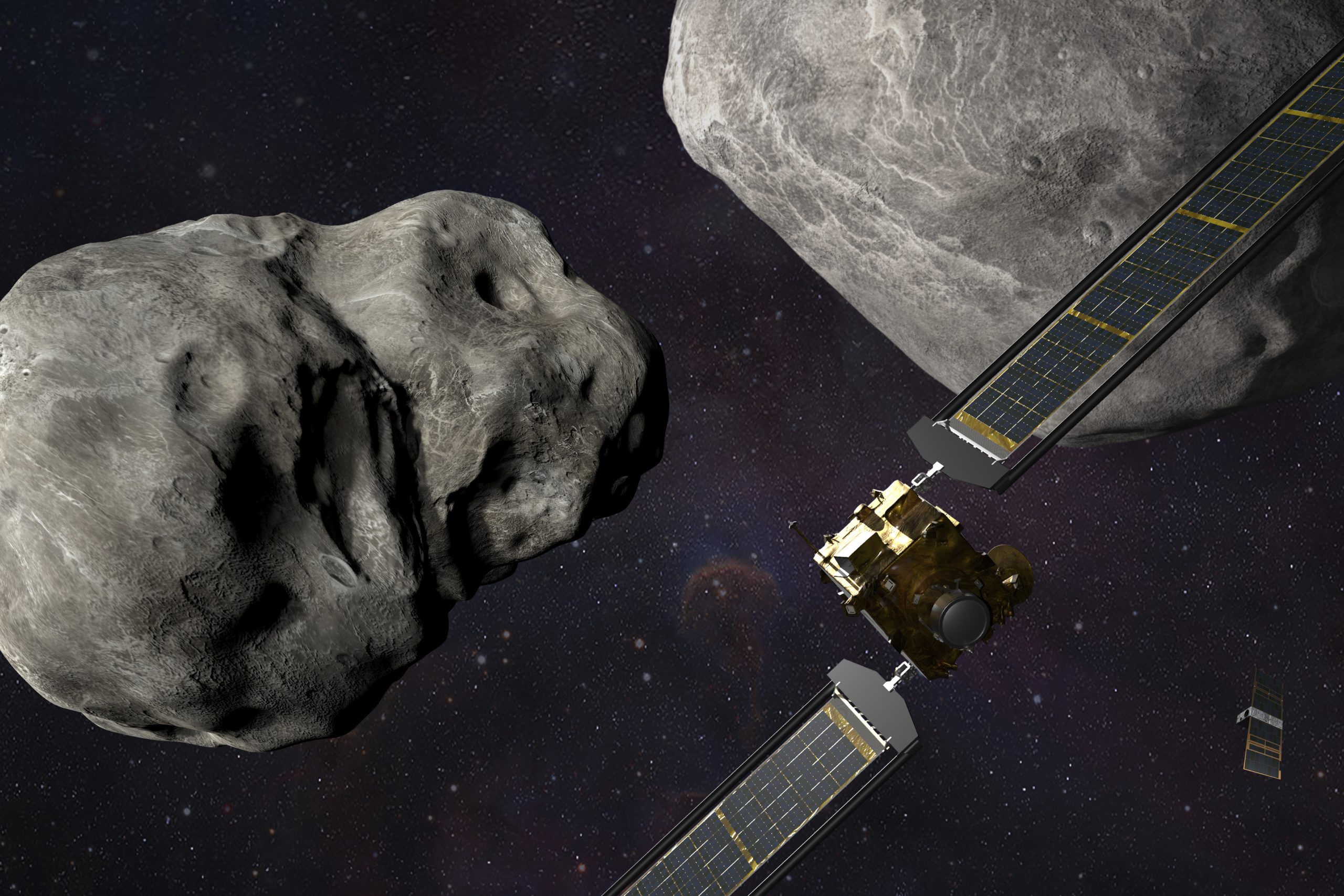Earth is not yet staring down a doomsday asteroid scenario like the one in Armageddon, but scientists are taking steps to ensure the planet is prepared.
On Monday, NASA will conduct an end-of-the-world prevention experiment by flying a spacecraft named DART head-on into an asteroid at a breathtaking 14,000 mph to bump the giant space rock out of its current trajectory in a bid to see if such a strategy can safeguard humans from meeting the same fate as the dinosaurs.
WEBB TELESCOPE CAPTURES PHOTOS OF NEPTUNE RINGS WITH NEVER-BEFORE-SEEN CLARITY
“This really is about asteroid deflection, not disruption,” Nancy Chabot, a planetary scientist involved in the effort, said, per the Associated Press. “This isn’t going to blow up the asteroid. It isn’t going to put it into lots of pieces.”
The asteroid getting slammed by DART is Dimorphos, which is barreling through space roughly 7 million miles away from Earth. Dimorphos presents no Armageddon-style threat to Earth, and scientists are confident that altering its trajectory won’t set it on a collision course with the planet. Scientists are merely using the first-of-its-kind test to shore up an asteroid defense strategy in the event that an asteroid poses an imminent danger to Earth at some point in the future.

Dimorphos orbits a much larger asteroid, Didymos, which was first discovered by scientists in 1996. By colliding with Dimorphos, DART is expected to nudge it into a slightly closer orbit with Didymos. Over time, this slight reconfiguration is projected to alter its course throughout space.
The smaller Dimorphos orbits its larger twin brother roughly every 11 hours and 55 minutes, and scientists are anticipating the DART collision will shave off roughly 10 minutes from that time, according to the outlet.
DART, which cost $325 million to develop, was launched into space last fall. NASA pegs the odds of DART missing its target at under 10%, the report said. It could take weeks to verify that the collision was successful. A European spacecraft named Hera will retrace DART’s journey in 2024 to collect data on the collision.
CLICK HERE TO READ MORE FROM THE WASHINGTON EXAMINER
In addition to brandishing asteroid defense mechanisms, space scientists are also working on plans to harvest material from them. In 2020, for example, NASA’s OSIRIS-REx spacecraft landed on an asteroid named Bennu and collected samples. The spacecraft is due back on Earth next September.
Japan has already collected samples from asteroids on two occasions, and China has similar plans in the works for 2025.

